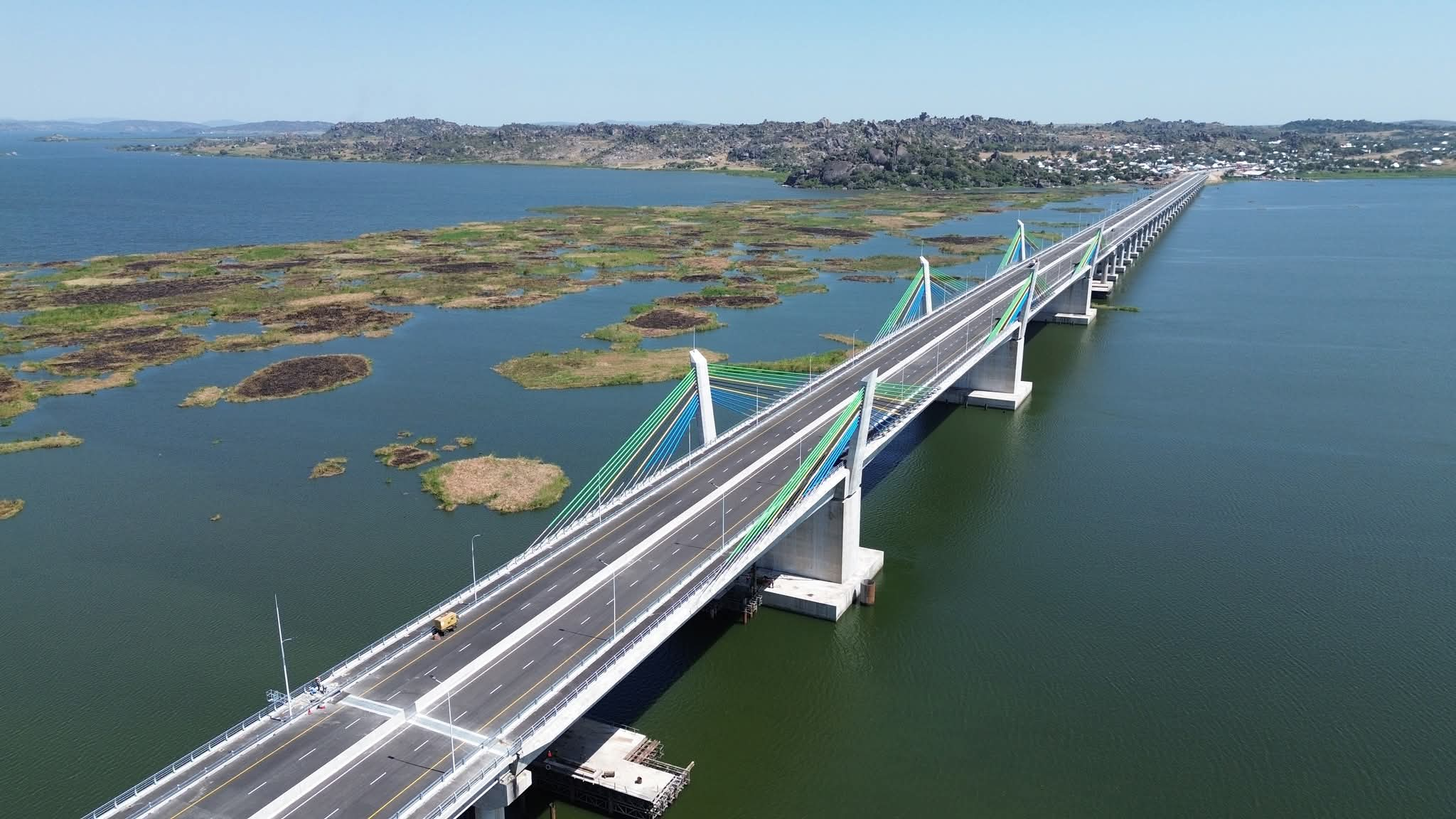AMAZING INFRASTRUCTURE: The Impressive Santiago Bernabéu Stadium, home stadium of Real Madrid FC
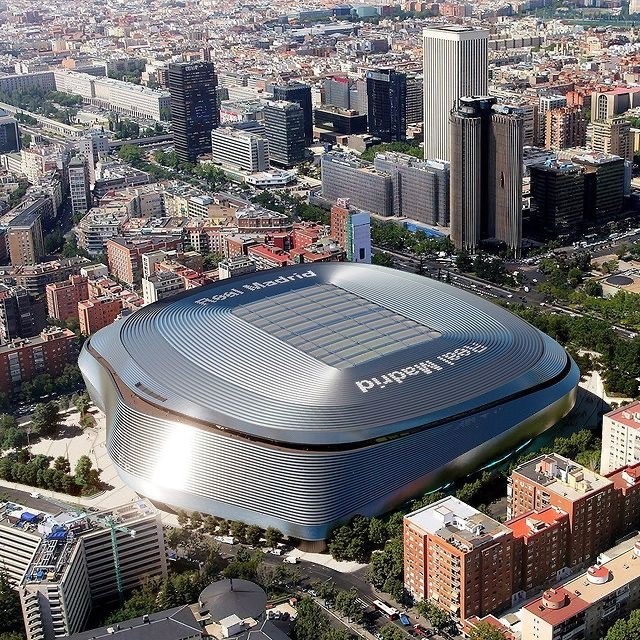
Did you know that the Santiago Bernabéu Stadium is named after footballer and legendary Real Madrid president, Santiago Bernabéu (1895–1978), and that it was the first stadium in Europe to host both a UEFA Euro final and a FIFA World Cup final?
Santiago Bernabéu Stadium, located in the Chamartín district of Madrid, is a football stadium in Spain with a seating capacity of 85,000, which makes it the stadium with the second-largest seating capacity for a football stadium in Spain. Named after footballer and legendary Real Madrid president Santiago Bernabéu (1895–1978), it has also been the home stadium of Real Madrid since its completion in 1947.
_1716458114.jpg)
The stadium is one of the world's most famous football venues. It has hosted the final of the European Cup/UEFA Champions League on four occasions: in 1957, 1969, 1980, 2010. The stadium also hosted the second leg of the 2018 Copa Libertadores Finals, making Santiago Bernabéu the first (and only) stadium to host the two most important premier continental cup finals (UEFA Champions League and Copa Libertadores). The final matches for the 1964 European Nations' Cup and the 1982 FIFA World Cup were also held at the Bernabéu, making it the first stadium in Europe to host both a UEFA Euro final and a FIFA World Cup final.
Here is a history of the impressive stadium's development and renovation from the 1940's to the 2020's.
◼️1940s
On 22 June 1944, the Banco Mercantil e Industrial bank granted credit to Santiago Bernabéu and Rafael Salgado for the purchase of the land adjacent to the old Chamartín Stadium. On 5 September 1944, architects Manuel Muñoz Monasterio and Luis Alemany Soler were hired and the structure on the site began to give way to the new stadium. On 27 October 1944, construction work on the stadium began, which was being built partly on the old site and on the grounds of Villa Ulpiana. In the meantime, Real Madrid played its home games at the Estadio Metropolitano in the 1946–47 season and at the start of the 1947–48 season.
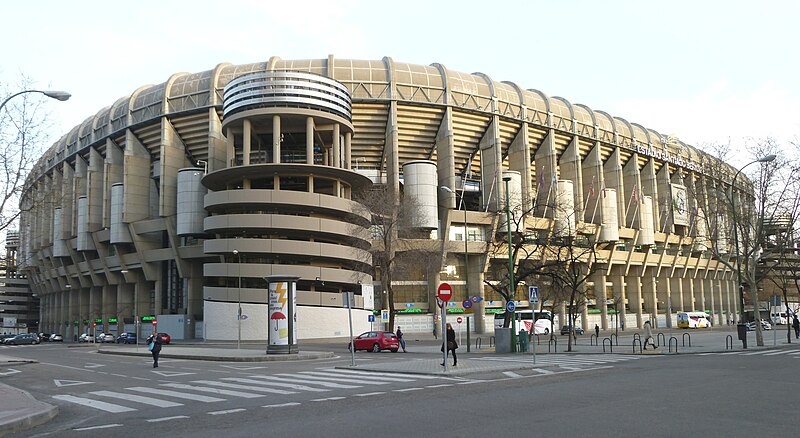
The stadium was inaugurated on 14 December 1947 with a match between Real Madrid and the Portuguese side Os Belenenses. After the preliminaries, at 15:30 referee Pedro Escartín from the Madrid school started the match. Real Madrid striker Sabino Barinaga scored the first goal in the 15th minute with a header. At the end of the match, Barinaga received a recognition pennant. Afterwards, players and managers of both teams celebrated with a dinner. The first official match took place on 28 December 1947 on matchday 12 of La Liga against Atlético de Bilbao, which had been postponed due to the inauguration of the stadium. The match was refereed by José Fombona Fernández from the Asturian school and ended with a 5–1 victory for Los Blancos. The first goal was scored in the 4th minute by Madrid midfielder Chus Alonso after receiving a pass from Barinaga.
The stadium's official name at the time was Estadio Real Madrid Club de Fútbol, although it continued to be known among fans as Nuevo Estadio Chamartín (English: New Chamartín Stadium) or simply Chamartín. The stadium had an initial capacity of 75,145 spectators, 27,645 of which had seats (7,125 covered) and 47,500 for standing fans.
◼️1950s
The first major renovation occurred in 1955. On 19 June of that year, the stadium expanded to accommodate 125,000 spectators. Thus, the Madrid coliseum became the biggest stadium of all the participants of the newly established European Cup. On 4 January 1955, after the General Assembly of Members Compromisaros, it was decided that the stadium adopt its present name in honour of club President Santiago Bernabéu. In March 1957, floodlights were installed to allow nighttime games. On 18 May of the same year, the new floodlights were officially inaugurated in a game against Brazilian club Sport Recife, which Real Madrid won 5–3.
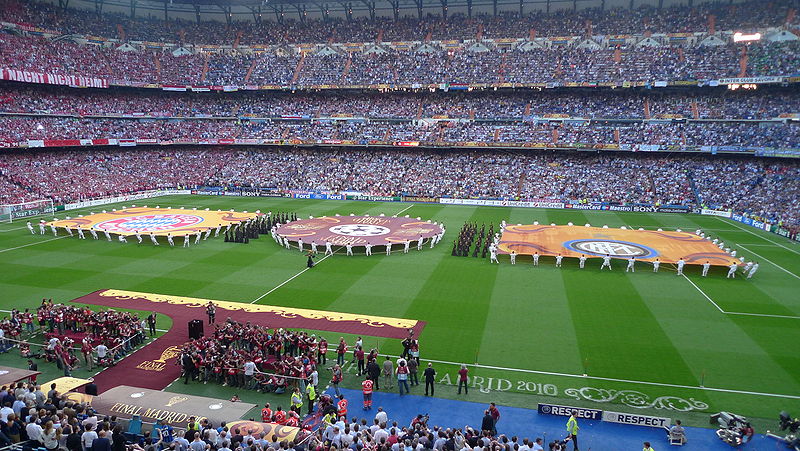
◼️1960s
In 1965, the transfer of all the club's offices to the stadium was completed, which previously had been moved between multiple venues in the capital. On 14 December 1972, coinciding with the 25th anniversary of the Santiago Bernabéu's inauguration, the first electronic scoreboard was installed inside the stadium and later utilized for the first time in a friendly match against the same rival that Madrid faced in 1947, the Portuguese Belenenses. The match ended with a 2–1 Real victory. Days before the scoreboard had already been used for the farewell ceremony of the Madrid legend Paco Gento.
◼️1980s
The next big changes did not occur until the early 1980s with the hosting of the 1982 FIFA World Cup in Spain. The stadium had to adapt to the changing times and with this, architects Rafael Luis Alemany and Manuel Salinas were hired for the stadium's renovation project. The brothers were sons of Luis Alemany Soler, who carried out the original construction project next to Muñoz Monasterio. The work lasted 16 months and had a cost of 704 million pesetas (US $4.7 million), of which 530 million was paid by the City of Madrid.
The improvements included a number of points. First, FIFA forced two-thirds of the seating area to be covered. For this reason, Real Madrid installed a roof covering the perimeter of the first and second tiers of seating, except the east side. The stadium's capacity was reduced from 120,000 to 90,000 spectators, starting downsizing in 1978. The project also involved remodeling the façade, the installation of new electronic signs in the north and south ends, as well as the renovation of the press areas, lockers rooms, access, and ancillary areas.
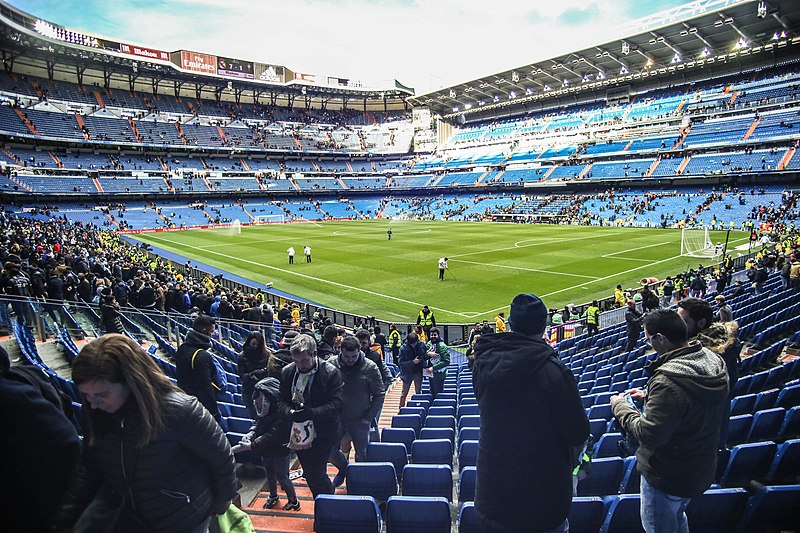
The stadium hosted four matches in the World Cup: three second-round Group Two matches (West Germany vs. England, West Germany vs. Spain, and Spain vs. England) and the prestigious final match (Italy vs. West Germany).The final between Italy and Germany was played in front of a sold out stadium of 90 000 people.
◼️1990s
In 1992, the board of Ramón Mendoza awarded an expansion and renovation project to Gines Navarro Construcciones, S.A. The work started on 7 February 1992 and concluded on 7 May 1994 with a final cost of more than 5 billion pesetas, substantially raising the debt of the club, which no longer had any institutional support. The work concluded with the creation of an amphitheater on the west side and in the foundations, as well as the opening of the new commercial center, "La esquina del Bernabéu." In total, 20,200 upgraded seats were installed, with each seat having a tilt of 87 degrees, ensuring a perfect view and proximity to the pitch. In addition, four entrance towers were erected on the outside, each with two staircases and a central spiral ramp, so the spectators could access the new tier and exit more quickly.
With the new structure, the height of the stadium was increased from 22 m to 45 m. This caused problems during the winter, leaving two-thirds of the field of play in the shade. This lack of sunlight led to grass deterioration on the pitch. For this reason, a polypropylene pipe network was installed at a 20 cm depth under the pitch. At over 30 km long the pipe system circulates hot water, keeping the turf from freezing in cold temperatures. A retractable protective roof was also installed to protect the fans from the elements. After the renovation, the stadium's capacity was 106,000 spectators. In 1997, with Lorenzo Sanz as president, UEFA required the Santiago Bernabéu to adopt an all-seating arrangement, bringing its capacity down from 106,000 to 74,328 spectators. On 20 May 1999, the Tour Bernabéu opened, along with the club museum.
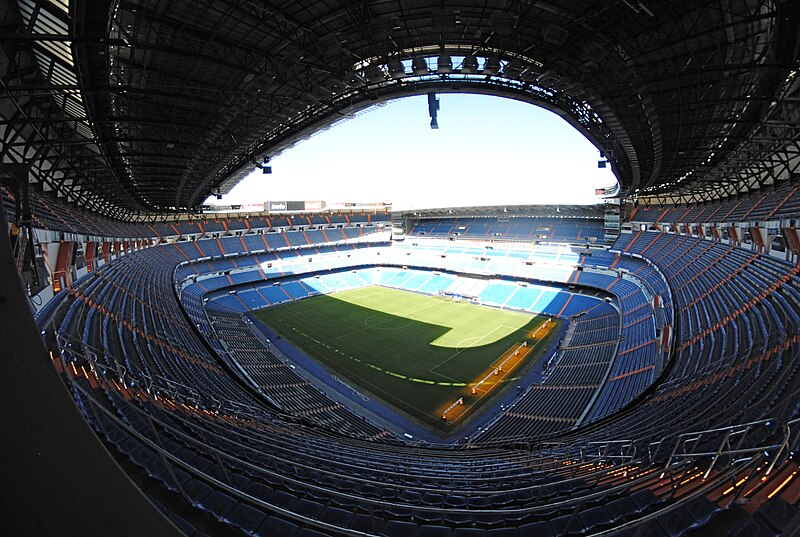
◼️2000s
As the club kept growing in all regards, thoughts for further changes to the stadium appeared. When Florentino Pérez became the president of the club, he launched a "master plan" with one goal: to improve the comfort of the Santiago Bernabéu and the quality of its facilities, and maximise revenue for the stadium. He invested €127 million in five years (2001–2006) by adding an expansion to the east side of the stadium, as well as adding a new façade on Father Damien street, new boxes and VIP areas, new dressing rooms, a new stage in honour of the east side, a new press area (also located on the east side), a new audio system, new bars, integration of heating in the stands, panoramic lifts, new restaurants, escalators in the tower access, and implementation of the multipurpose building in Father Damien street. Following the enlargement of the lateral east side and the creation of new galleries, the capacity of the Santiago Bernabéu was expanded to 80,354, all seated.
In 2007, the 1,000th match was played at the Santiago Bernabéu. In addition, UEFA decided to give the Santiago Bernabéu elite stadium status on 14 November 2007, a month before the celebration of the 60th anniversary of the inauguration of the stadium. In the latest UEFA revision on 24 October, the day a Champions League group stage match against Olympiacos was played, they decided the stadium met the expectations of an elite stadium, and upgraded its category accordingly.
Pérez proposed construction of a retractable roof before he resigned in 2005. In 2009, following the re-election of Pérez as the club president, it was announced that the roof construction was looking unlikely due to the financial situation of the club. According to Spanish sports newspaper Marca, however, Pérez wants to restructure Santiago Bernabéu. According to the newspaper, the architect in charge will be chosen from among a shortlist of Spanish architects Santiago Calatrava and Pritzker Prize-winner Rafael Moneo, and Chinese-American Ieoh Ming Pei, also a Pritzker winner.
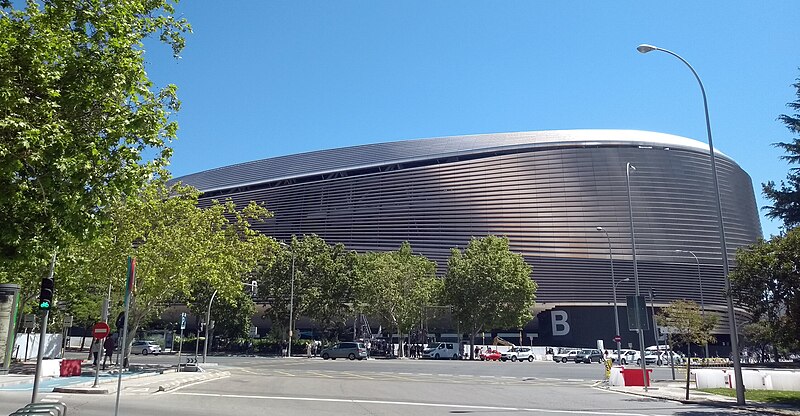
◼️2010s
In 2011, around 1,000 seats were added, bringing the stadium to a capacity of 81,044. On 16 October 2013, Pérez announced that Real Madrid was seeking to sell the naming rights for its stadium and looking for a sponsor for the €400 million renovation project. The proposed design of the stadium renovation, produced by German architects GMP, was unveiled on 31 January 2014. The bold design includes a retractable roof, with the overall cost of around €400 million likely to be met half via the sale of naming rights and half via a bond issue to Real members according to Spanish media reports. Real Madrid then announced a sponsorship agreement with IPIC to assist the club in the redevelopment of the stadium. Pérez then said that in compliance to the agreement the name of the stadium would be renamed "IPIC Bernabeu" or "CEPSA Bernabeu". The surface has been replaced with Mixto hybrid grass manufactured in Italy.
◼️2020s
A €525-million renovation project was initially set to begin in summer 2017, but began in 2019. The capacity was to be increased by approximately 4000 with the addition of an extra tier, bringing it to just over the 85,000 mark. Furthermore, the height was increased by ten metres and a retractable roof as well as a retractable pitch were added. The club is expected to sell the naming rights to the renovated stadium. The work was initially programmed to last three and a half years (2019–2022). However, the COVID-19 pandemic and Russian invasion of Ukraine caused significant disruption to supply chains, prompting the club to postpone the stadium's inauguration to 2023.
#penglobalfactfile #SantiagoBernabéu
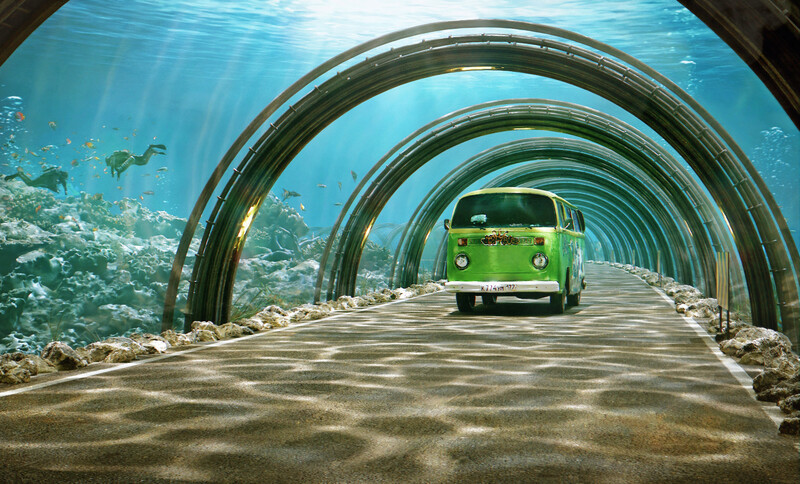
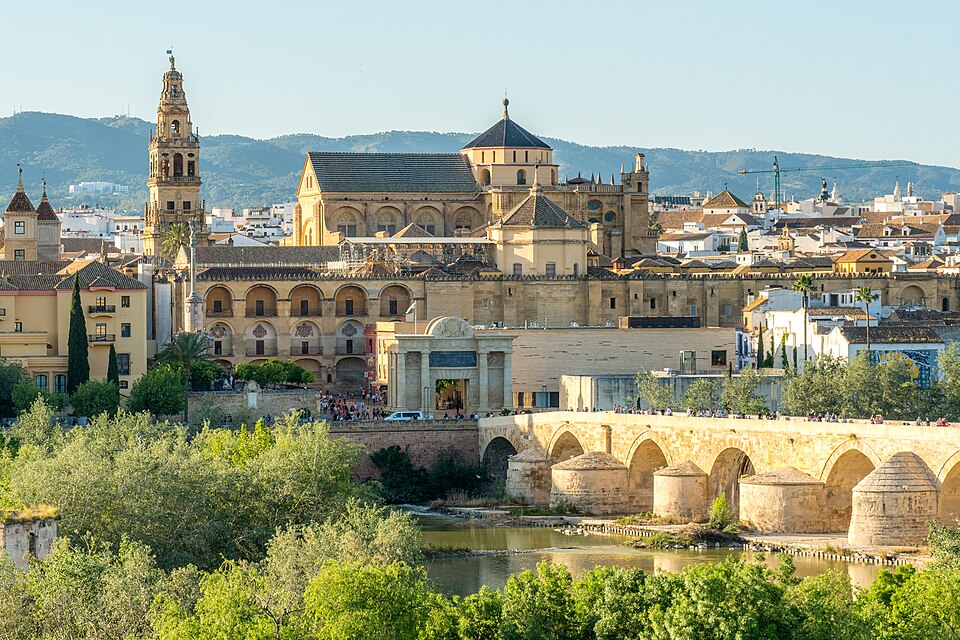
_1755775186.jpg)
